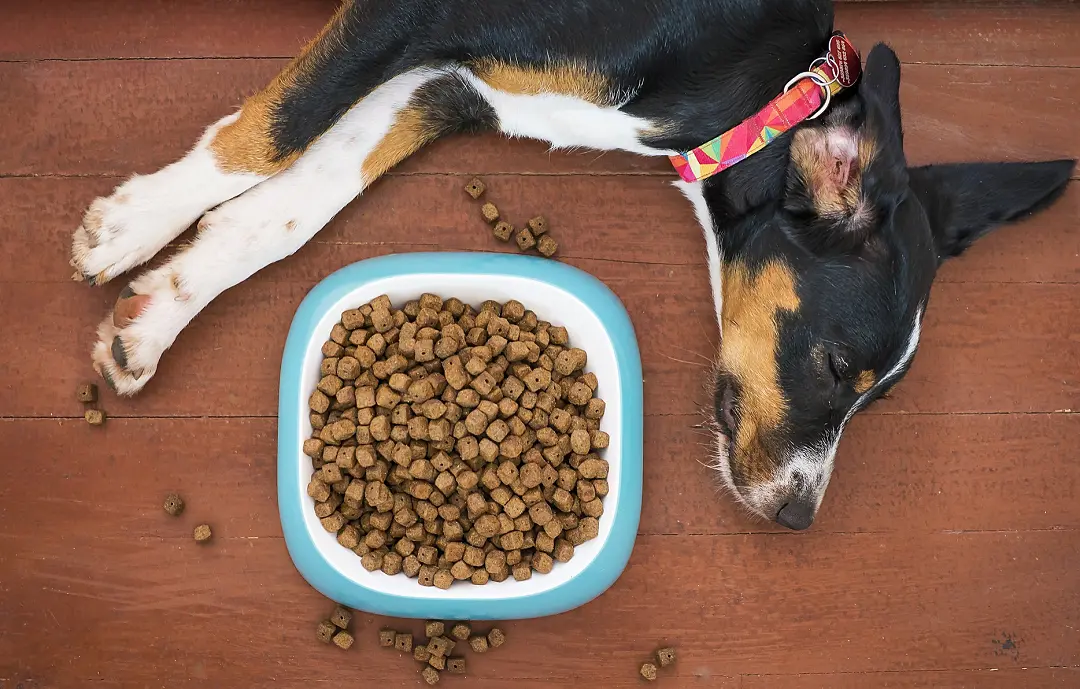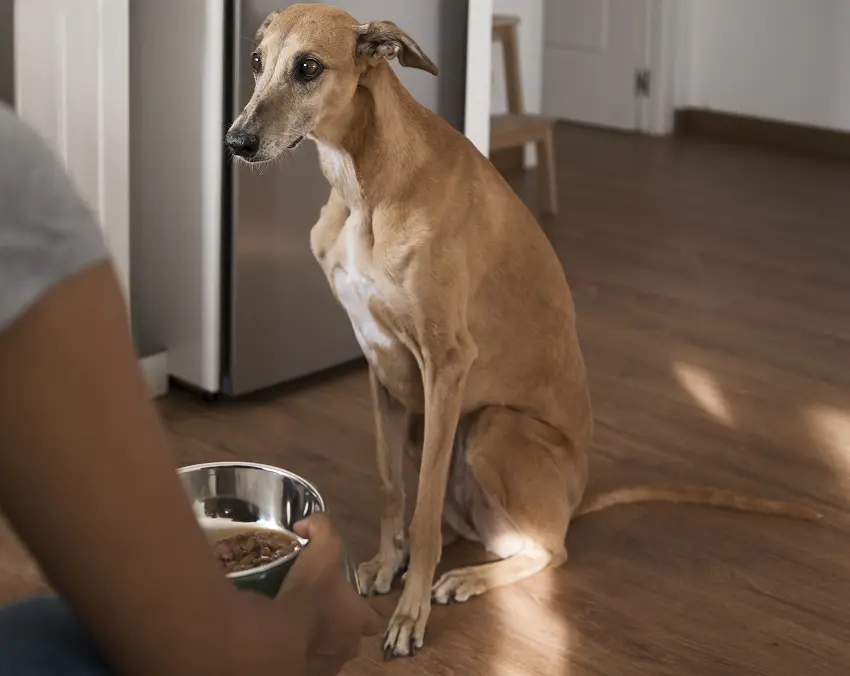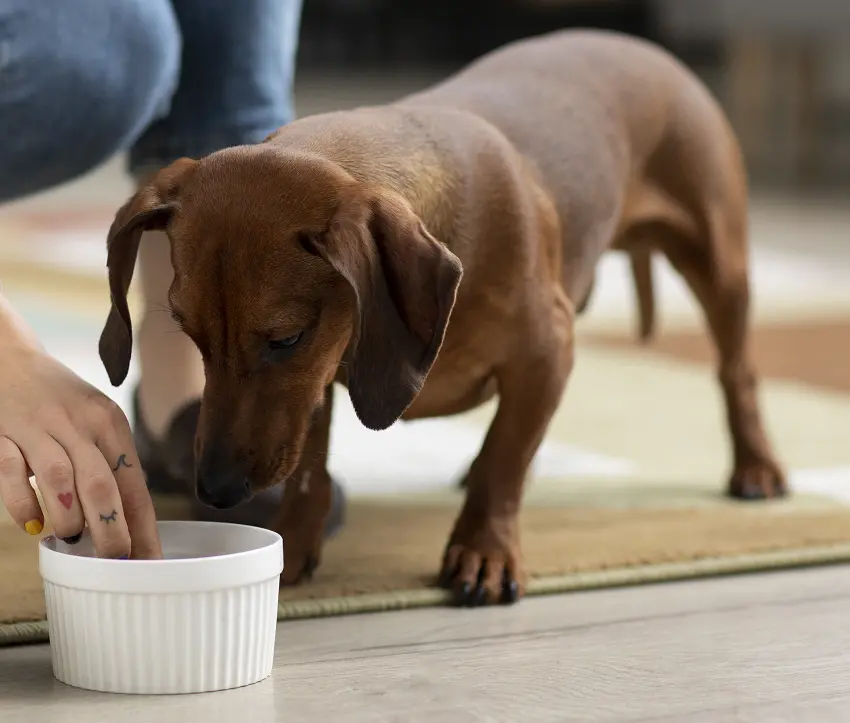How To Get A Rescue Dog To Eat – 8 Helpful Tips
One of the most common issues adopters face is their rescue dog refusing to eat. While some adopted canines will adjust right on, some dogs need time to acclimate to their new home. As the new owner, it’s important that you know how to get a rescue dog to eat.
I’ve spoken with many of my friends who adopted rescue dogs. They shared some advice and tips, which I discussed below.

Why rescue dogs refuse to eat

Rescue dogs have gone through stressful events in their life. Many of them are abused and neglected by their owners. Being locked up in a shelter doesn’t help, what more being taken to a new home with new people, sounds, smell, and so on.
This is why getting a new rescue dog to eat can be challenging. But as with any pet, you have to be patient and understanding.
Such loss in appetite is highly connected to stress and fear. It may take a few days to weeks before a rehomed canine finally settles in its new owner. There are even cases when a rescue dog will take years to trust its new family fully.
With a rescue dog, you need to take it slowly and gently. This way, you can overcome their fear. It won’t just help the rescue dog regain its diet; this will help strengthen the bond between the two of you.
However, there are also some instances when a medical problem is at play. Rescue dogs come from different backgrounds, and unless you get them vet-checked, you won’t fully know where they stand in terms of health.
Conditions like kidney failure, liver problems, and metabolic issues can affect a dog’s appetite. Still, it can also be just a typical case of being a picky eater.
How to encourage a rescue dog to eat

If your rescue dog isn’t eating, the following tips will help a lot in encouraging the doggo to consume some food:
1. Know the reasons why
It’s important to understand why your rescue dog is refusing to eat. It could be the other pet at home or the presence of too many people at once. please read here How Long Does It Take For A Dog To Pass A Squeaker?
You should also consider changing the dog bowl if it looks like the one in the shelter. Other items like the sight of a leash, collar, crate, or even children can make a rescue dog shy away from eating. please read here Everything you need to know about dog collars
You can always consult with the vet if your dog is acting stranger or not eating at all. The veterinarian can provide answers and what you need to avoid.
2. Set a routine
Canines thrive in routines. To help your rescue dog adjust, you should come up with a feeding schedule. I suggest breaking down the entire day’s food into multiple servings instead of giving it one sitting. This way, a nervous or picky doggo can eat small amounts while preventing a bowlful of kibble from going stale.
If your rescue dog is emaciated, it’s a must to seek supervision from a veterinarian. Emaciated canines should never be fed large meals right away. While it may seem like a quick solution to undernourishment, it can create life-threatening problems.
For emaciated dogs, feeding should be done four times a day in small servings. You can split it into more servings the more malnourished the dog is. please read here How To Fatten Up A Malnourished Dog
By sticking to a routine, your dog will learn that feeding is a normal part of the day. It will also help the canine settle down and get used to its new home.
3. Make mealtimes quiet and undemanding.
Another important thing you should do is to make mealtimes as calm as possible. You should feed the rescue dog in a quiet area of your home with little to no foot traffic.
If you have kids, ask them to leave the dog alone while it eats. You should also limit loud sounds and keep away other pets.
Never force or shout on the dog if it refuses to eat. Doing so will just make mealtimes traumatic for the canine, which will make them stop eating more.
Simply place the bowl of food near your dog and let it eat on its terms. Make sure that you’re sitting at eye level to prevent the canine from feeling threatened or intimidated. Also, speak softly and comfort the nervous dog.
4. Switch up food products
Some rescue dogs can be very picky with their food. I suggest switching up various dog food products to see what your canine prefers.
You can also make mealtimes exciting by adding slices of chicken, beef, or salmon into the kibble. If that doesn’t work, try adding a small amount of hot water into the kibble and mixing. Dogs love warm food, which might be the only thing that’s missing from the bowl.
Avoid microwave-heating kibble as this may cause chemical changes that will ruin the food. Hot water should be enough to spice your dog’s meal.
5. Observe the dog’s eating habits
Like any dog, rescue canines have adapted eating habits. Observe this and see what your new pet prefers. You can also ask the shelter staff if the doggo has exhibited any unique eating habits.
One of my friends adopted a Pit Bull from a local shelter here in Calgary. The furbaby won’t eat any of the food she gave. It turns out the Pittie happened to have an expensive taste. The pooch will only eat organic kibble!
6. Serve an irresistibly smelly food
The smell of the dog food is often a make-or-break part for fussy or nervous canines. Try serving fish-flavored kibble or adding a few drops of fish oil to it. In my experience, no hungry dog can resist the odor and taste.
Adding freeze-dried animal organs to the bowl will also help. While this product is stinky, it’s just a small sacrifice if it’s the only thing that will make your rescue dog eat.
7. Toss treats from time to time
If the rescue dog only eats small amounts, you can compensate by providing treats often throughout the day. You can also use kibble as treats to help your dog more.
8. Provide company
Lastly, some rescue dogs are yearning for company. It will help if you’ll sit beside the pooch while it eats. Also, you should position the bowl properly so the dog’s back is on the wall.
Eating is a vulnerable moment for dogs, and nervous dogs always feel that something will come from them while their backs are unguarded.
Do this until the rescue dog has settled in your home. Still, you should start training your dog to be more independent since you’ll never want them to become too clingy.
How long does it take a rescue dog to adjust?
There’s no specific formula when it comes to a rescue dog’s adjustment period. Some canines acclimate fast at six weeks, while there are those who will take months to trust their new owners.
Take note that the speed of a rescue dog’s adjustment depends on the household setup. It’s important to do your part for the dog to get used to its new environment. The key here is earning the dog’s trust by serving as its protector, food source, and companion.
Should you hand feed a rescue dog?
Hand feeding is a great way to encourage a nervous rescue dog to eat. It will also teach the dog to control its teeth on your hands to prevent biting. Above all, this promotes bonding between you and the canine. please read here what impacts how much to feed your dog
However, you should practice caution, especially if the rescue dog has aggressive tendencies. If the pooch growls or bares its teeth, you should place the food on the ground and let it approach freely. This will help teach the canine that you mean no harm.
Will a dog starve itself to death?
Most dogs have an intense survival instinct, so they will likely start eating once they are on the verge of starvation. However, some canines with health problems may unintentionally starve themselves to death.
It’s important to get the rescue dog checked by a vet before you bring it home. This way, you’ll know if the canine has special needs in terms of feeding.
Why won’t my dog eat his food but will eat treats?
If the rescue dog is only eating treats and not its full meals, you have to reassess the dog food product you’re serving. The dog probably hates the smell, taste, or texture of the food.
Meanwhile, there are cases when dogs suffer from partial anorexia. Canines with this condition will only eat treats or table scraps and not full meals. You should seek the help of a veterinarian if you suspect that your pet has this problem.
Why is my rescue dog always hungry?
While some rescue dogs will stop eating when rehomed, others will exhibit a voracious appetite. This can happen if the dog has been deprived of food by its former owner.
This is a good sign, but you should always practice portion control to prevent obesity. Consider getting a slow-feeding bowl as well if the doggo gobbles a whole bowl too fast.
Wrapping Up
Knowing how to get a rescue dog to eat is a challenging task. There are varying reasons why rescue canines refuse food, which also begs for different solutions. If all your efforts aren’t working, you can always consult a veterinarian, pet trainer, and pet nutritionist.
